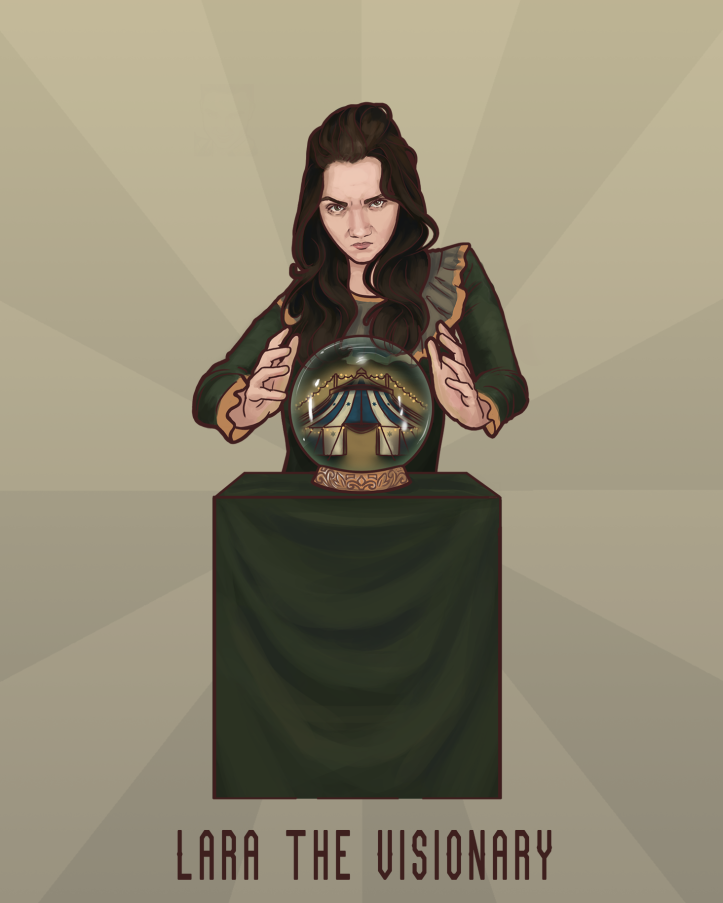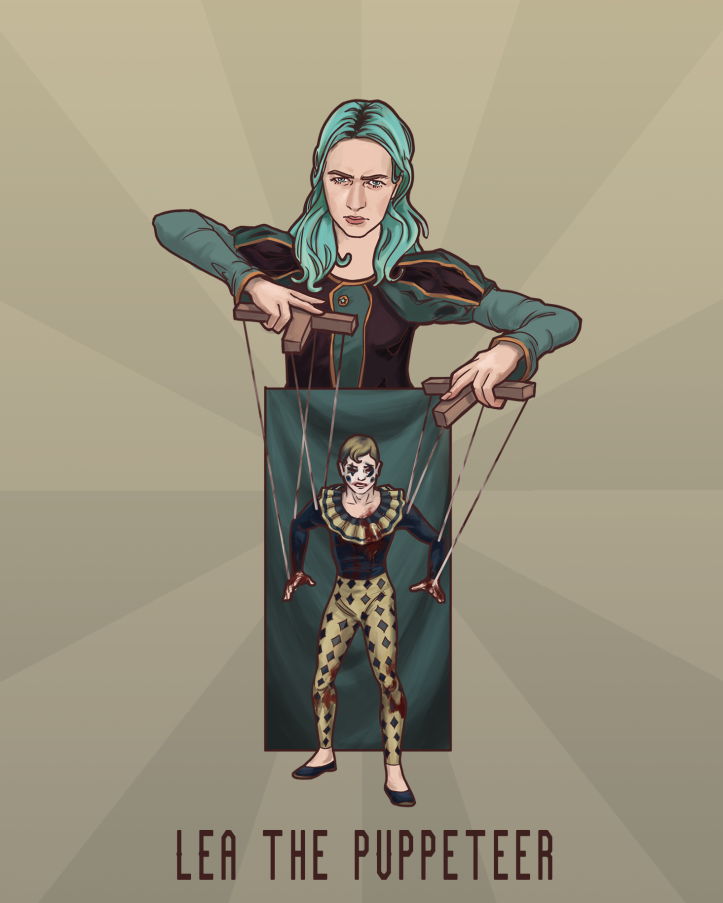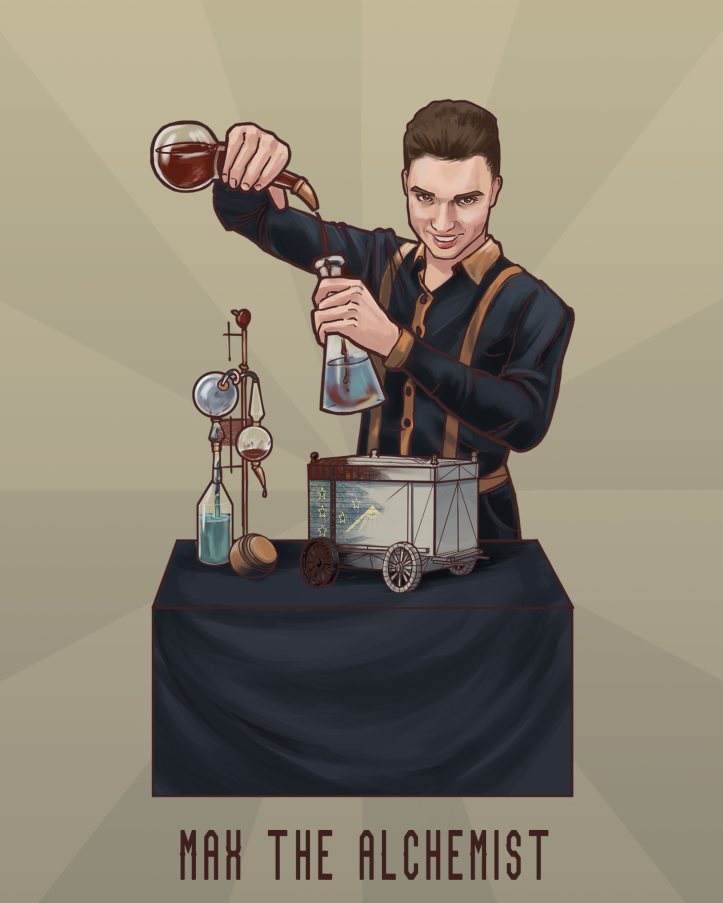I really can’t describe how great a time I had working on The Moonlight Circus. The second major project in the university and a complete success!
Why did I do this?
As with any university project, this was a requirement to move forward. This time, however, it was not my pitch that was made into a project. I had the pleasure to work on the project idea of Lara Meyer.
There are 2 main reasons why I decided to go with Lara’s project.
1. It was a VR project and I had also bought a pair of VR glasses a few months before and was very intrigued by the whole subject. I really wanted to work on a VR project.
2. In a pitch, you can always specify what kind of team member you are missing. Game designer and programmer. Sounded like it could be a lot of fun for me and I also had a game design class in the same semester.
(3.) Oh and it was a horror game. I love that.
What did I do:
I had “applied” to be a game designer and programmer, and that’s pretty much what I ended up doing. In addition, I had then taken on the role of sound manager.
Meet the Team
Game Design
Especially at the beginning of the project I was mainly concerned with the game design. Lara’s idea was an Escape Room in a circus, she had provided a few ideas why you were in the circus and why you needed to escape and that was it. With this basis we entered the concept phase as a team. While the others worked a lot on visual concepts, I made it my task to define our game and the underlying design more precisely.

So I defined the basic loop you can have in an escape room.
- The player is confronted with a puzzle.
- Try to solve it somehow.
- And we are then rewarded with either a new room, progress in the story or the end of the game.
This had already revealed the first two problems:
1. How do puzzles work in a game?
2. What exactly does Story Progress look like?
So we played a lot of different games, we also went to actual Escape Rooms, and we also looked at the first VR Escape Rooms. Basically, we did a lot of resarch.
Besides all the resarch, we also developed the story. Our process evolved from the mistakes we all made last semester. No clear owner for the story, we often developed ideas, threw them overboard and started again. Since Narrative Design is a discipline of Game Design (and I have a lot of fun doing it) I took ownership over the story of the game. In doing so, I established the following process:
1. Prepare, summarize and logically link ideas.
2. Present ideas to the team: If Team is unhappy, iterate over together and go back to step 1. If Team is happy continue with step 3.
3. Present ideas to coaches (professor): If profs are unhappy, get Feedback, Include them and go back to step 1. If profs are happy continue with step 4.
4. Finish Up Story.
By taking this approach, we had a story in just 2 weeks that both the team and the coaches liked. (Remember the project lasts only 3 months)
In addition to the story, I had also continued to work on the puzzles, defining that since we have a VR game with an unconventional physically-based locomotion system, that all puzzles must also be solved physically to remain consistent in gameplay.

The Core Loop has been extended by a more precisely defined Puzzle Loop:
- All puzzles arise from a missing object.
- The puzzle solution is to find this object.
- This object can be found only through physical actions. Throw, crouch, etc.
- This object can be found only through physical actions. Throw, crouch, etc.
- In the process, you are stopped by the opponent of the game.
- Against all odds, you can still solve the puzzle and thus get further in the story.
I have learned from my mistakes! By the 2nd week of the project, we had already started prototyping.
In the course of the project we also tried out the story in a sperate story prototype. Sort of a walking simulator to test if the players think what we want them to think.
I had partially handed in the level design. Lea basically developed the layout of the circus. But I had my hand in many smaller decisions. For example, in the anticipated paths of the player. How we could direct those through light, sound and movement. And what we should avoid, like forcing the player to go back to where they were before to move on, instead of taking a new path to get further in the game.
This is how the project then went on. We developed the puzzles, brought in graphics, added story elements through voice over and small cutscenes, added sound and of course always tested everything.
Programming
Unlike the last project, I didn’t program everything from scratch. That would have taken too long. No we used a useful asset from the Unity Store that simplified the whole VR programming. In fact, the only thing I’ve really done is program the movement system and modify the VR tool to our use. My biggest work in programming was bug fixing.
Gosh I hate bug fixing. But it is necessary and there were very many bugs. In fact, we had not planned enough time for the bugs and general improvements. We ended up with a game that we had tested as thoroughly as possible and fixed as many bugs as we could, but unfortunately you still find things.
Perhaps the Programming section is a little smaller than it was in the end. There are still many points to mention, like that I brought the project to the Oculus Quest 2, programmed for different VR platforms (Steam VR, Oculus etc.) and overall made the game work. But I want the focus here to be on the game design, because that was the most fun and in my opinion the most successful.
What did I learn?
This project was great! I still made a lot of mistakes, but that’s part of learning. And this project was simply a complete success in everything:
- We got a perfect score on it.
- We have been with the game on an online exhibition (The FMX in Stuttgart).
- We uploaded the game to Steam.
- More than 20.000 Downloads, more than 5.000 unique Players all over the world.
- Positive Feedback (though there are still some bugs and room for improvement)
- Let’s Plays on Youtube, Streams on Twitch.
- All rather small (500 – 1.000 clicks on Youtube) but still. Awesome!
- All rather small (500 – 1.000 clicks on Youtube) but still. Awesome!
- Personal growth and new knowledge for everyone from the team
And to summarize my learnings:
- How much you can gain from frequent testing, prototyping and iterating over your idea and features.
- How to design games for VR.
- I know now how to deploy and publish a game on steam.
- I learned a bit more about video editing (We did a video of the Moonlight Circus for the FMX)
- And the most important thing: You can create and publish a game without crunching.
- I crunched in my work. I crunched in previous projects. But this game was so succesful, without crunching. It was just such a valuable learning.



